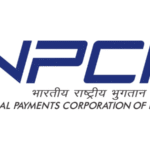Adobe’s Agentic AI Strategy Gains Early Recognition as BofA Hails It as Differentiator

Adobe is staking a growing claim in the burgeoning field of agentic artificial intelligence, technology designed to make autonomous decisions and execute complex workflows within software tools. According to Bank of America Securities, while Adobe’s agentic AI initiatives are still in their early phase, they stand out as a key differentiator that could yield significant business advantages, especially in areas like productivity, customer experience, and content creation.
The term “agentic AI” refers to advanced AI systems acting more like digital employees than standard chatbots, able to reason, plan, and carry out tasks with minimal human oversight. Adobe has already introduced several of these capabilities through tools such as Acrobat AI Assistant and early versions of agents within its Creative Cloud environment, allowing users to delegate tasks like document research, design refinement, and visual enhancement.
BofA’s recent analysis highlights that 64% of companies are preparing for agentic AI adoption by 2025, though most are still experimenting with pilots or in exploration mode—only about 6% have deployed it at scale . The potential is underscored by a forecasted $155 billion in global software spending by 2030 driven by agentic AI, approximately triple current industry estimates. Adobe is specifically mentioned among the top firms poised to benefit, alongside Salesforce, Microsoft, and ServiceNow .
Adobe’s roadmap centers on an ecosystem of purpose-built, context-aware agents—integrated into Acrobat, Express, Photoshop, Premiere Pro, and its Experience Platform. For instance, Acrobat AI Assistant can answer complex queries about document contents or generate role-specific agents, such as academic tutors or sales aides. In Creative Cloud, users may soon see agents recommending and applying image edits or preparing animated visuals via Adobe Express—all guided by natural language commands.
The company’s broader Adobe Experience Platform Agent Orchestrator, unveiled at Adobe Summit 2025, lets brands deploy ten specialized agents—like Content Production or Audience Segmentation Agents—to automate marketing and customer experience tasks. These agents can plan, execute, monitor, and optimize multi-step workflows in real time, enhancing both creativity and operational efficiency.
BofA’s endorsement suggests that Adobe’s early work in embedding agentic AI across its product portfolio may provide a competitive edge—particularly as companies seek to shift from generative AI experimentation to scalable, autonomous workflows that deliver measurable ROI. With generative AI adoption still evolving, agent-based automation has emerged as the next frontier in enterprise software.
Adobe appears well-positioned for this shift, having transitioned from generative model experimentation to integrating embedded agents that act on user intent. Its strategy emphasizes user empowerment, letting people stay in control while automating repetitive tasks and enhancing creativity .
While full maturation of agentic AI may still be years away, early-stage adoption across Acrobat, Creative Cloud, and Experience Cloud is demonstrating tangible benefits. As BofA notes, moving from experimental to production-grade deployments will be the key test. Adobe’s head start in this space could define its positioning as agentic AI becomes the next major platform battleground.
In summary, Adobe’s agentic AI push—rooted in contextually aware agents and autonomous workflows, is being recognized by financial analysts as a meaningful differentiator. With industry-wide attention turning to scalable AI-driven productivity, Adobe is betting that agency-powered tools will shape the future of creative and enterprise software.
















